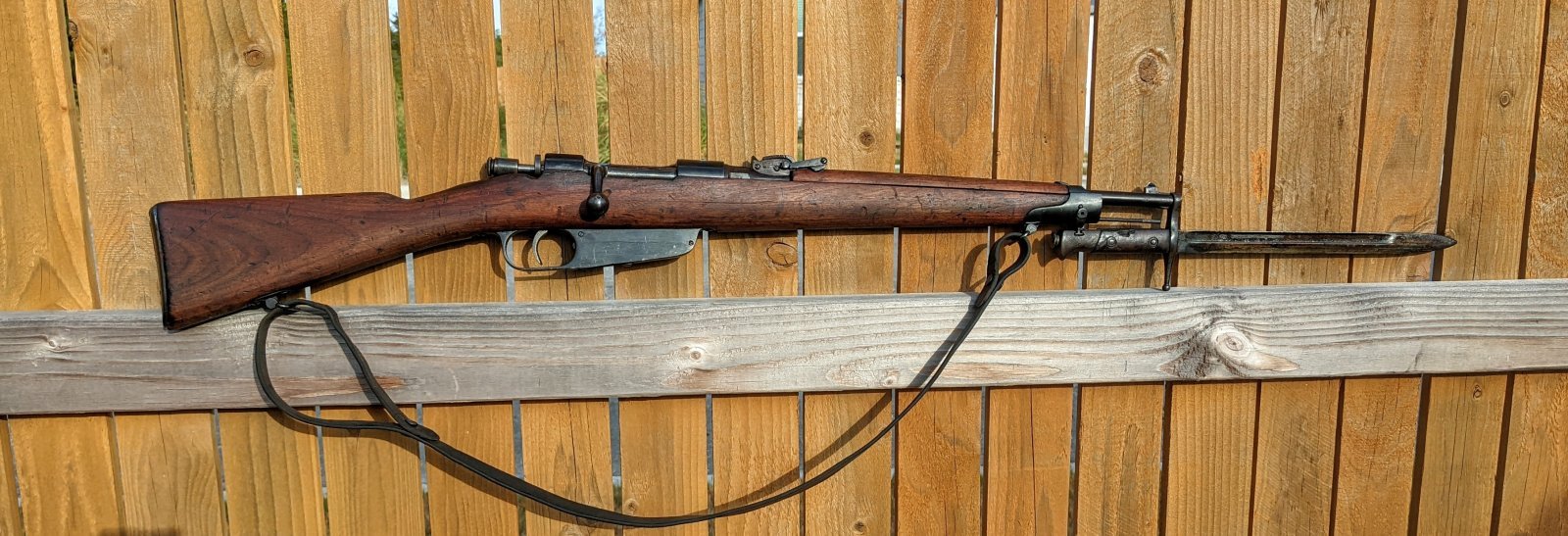Carcano Modelo 1891 Truppe Speciali Carbine

Ah those goofy Italians, must have been a couple bottles of vino deep to come up with this one.
This here is yes another Carcano, but not one of the M1891 Carbines that are hot on the market right now. This is an M1891 Truppe Speciali Carbine, made in 1917 by Brescia. Another one for the WWI wall!
These carbines were meant for "special troops" such as artillery, engineers, machine gunners, Alpini troops, etc. that needed a smaller, more compact rifle that would not get in the way of their other duties.
These differed from the other M1891 Carbines, known today as the Calvary Carbines, as they do not have the permanently attached folding bayonet.
Other than that a a few small differences, these are still at heart a standard M1891 Carcano action: firing the 6.5x52mm cartridge from a 6-round en-bloc clip in a Mannlicher style action and magazine.
While it may look like most other Carcano Carbines, this one, or at least the bayonet is a little bit special. This example managed to escape the standardization effort in the 20's and still retains it's original bayonet lug. That's right, that weird sideways one that like no one has bayonets for.
Welp, a few months ago I managed to find one of those bayonets and now I finally have a home for it!
It also has a weird sideways latch with the button on the rear instead of the side like normal bayonets.
These bayonets are kinda hard to come by as most were scrapped or converted to the standardized style in the 20's too. Because of that they go for a pretty penny (relatively). This bayonet is worth more than the rifle it sits on!
The carbine is just one of the PW imports from Italy and has the nice FAT stamp on the stock.
Definitely seems to be one of the nicer imports. Great bore, stock in good shape, and even still has the cleaning rod. The T.S. Carbines have been long sold out and are now relegated to the realm of the most milsurps. Nabbed it off of GB for pretty cheap though. Definitely still some of the best deals in the milsurp market.


















 The look on his face always impresses me. We finally used aircraft to suppress the well-entrenched German fire.
The look on his face always impresses me. We finally used aircraft to suppress the well-entrenched German fire.

























































 Did approx. 25-30% of US troops in WW1 use the M 1917, instead of the much more famous Springfield ?
Did approx. 25-30% of US troops in WW1 use the M 1917, instead of the much more famous Springfield ?



